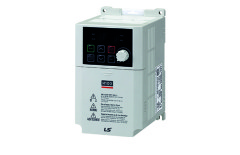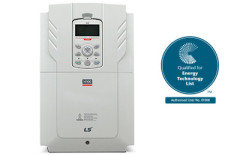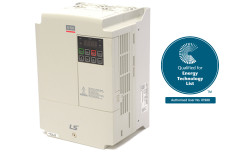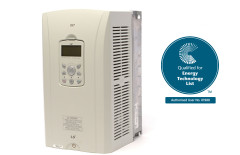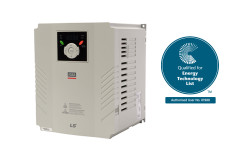This website uses cookies so that we can provide you with the best user experience possible. Cookie information is stored in your browser and performs functions such as recognising you when you return to our website and helping our team to understand which sections of the website you find most interesting and useful.
Modern industrial processes and utilities use a diverse range of pumps and pumping equipment to ensure plants operate at peak efficiency with minimum unplanned down time and therefore maximum profit.
Pumps can be used for supply and drainage purposes, dewatering applications, irrigation, submersible and sump use, and fire systems.
The two most commonly used pumps are (a) Centrifugal pumps, and (b) Positive Displacement (PD) pumps and the choice of which type is used depends on the application and the product being pumped, for example water, oil, gas, chocolate, etc. The choice of pump will also take into account required efficiency, flow rate and pressure requirements, system head and many other factors.
Because of increased flexibility in terms of matching supply to demand and the possibility of considerable energy savings, it has become almost the norm for both of these types of pumps to be electrically operated via a variable speed drive (VSD) either mounted local to the pump in the form of a high IP rated casing, or remotely mounted in a control panel.
As each type of pump has a very different characteristic it is important that the control system designer and/or panel builder understand the duty of each type of pump when specifying the correct VSD for the job.
For a centrifugal pump for example, the power (kW) increases by the cube of its speed and therefore has a low overload at starting. For this reason it can be considered as a ‘Normal Duty’ (ND) or ‘Variable Torque’ (VT) application.
Generally, however the PD pump should be considered as having a potentially high starting torque requirement with the possibility of a high overload under certain operating conditions such as when starting so must be classified as having a ‘Heavy Duty’ (HD) or ‘Constant Torque’ (CT) characteristic.
When selecting a VSD for either type of pump these characteristics must be taken into account. For example, the general purpose S100 VSD range from LS Industrial Systems has been designed as a Dual Rated inverter drive which means that it can be used in either of the two modes, ND or HD.
If for example we look at a typical 400V, 3-ph, 4-pole IE2 55KW motor driving a centrifugal pump type we would expect a rated motor current of around 93-95A with ND starting characteristics and maybe a 110% overload setting. Because of its Dual Rating feature and a centrifugal pump’s low overload it is possible to drop down one whole frame size on the S100 drive, i.e. from 55kW to 45kW. This is because the 45kW S100 drive has two current ratings: – 45kW (HD) = 91A continuous with 150% overload for 60 seconds and 55kW (ND) = 107A continuous with 110% overload for 60 seconds.
Commercially this has two benefits (1) obviously the cost of 45kW inverter is less than a 55kW inverter but also (2) the footprint is reduced in terms of height and the depth is also reduced which could mean an opportunity to look at a smaller panel.
However, if the same motor was coupled to a PD type pump we could realistically expect a high overload at starting. In this case we can only look at a HD rating which would mean we must go back up to the full 55kW rating so that we get the current required during normal loading up to 93-95A plus the ability to supply an extra 50% on top of this for up to 60 seconds at start up (HD).
Not all VSD’s have a Dual Rating capability. Many manufacturers produce a HD rated drive with a high overload capability for PD pumps, cranes, mixers, compressors etc but also produce a ND version for use with centrifugal pumps and fans only.
The new single rated H100 from LS Industrial Systems is designed especially for ND type loads only and cannot be used for HD type applications. H100, however, is a powerful state-of-the-art VSD with many intelligent features designed for use with fans and centrifugal pumps.
An important feature of both S100 and H100 is that constant pressure can be maintained by a pump system using integrated PID controllers with an added sleep function for further energy savings.
A single H100 can operate multiple centrifugal pumps – one main and five auxiliaries each scheduled by an on-board real time clock (RTC) operating a calendar system.
Other new features unique to some pumping applications and in particular the fresh and waste water, and demineralised water treatment industries are Soft Fill operation, Pump Cleaning (‘Anti-ragging’), Broken Pipe Detection, Flow Compensation and End of Pump Curve detection.
H100 is supplied with an integrated DC reactor for reduction of RMS input current and an EMC filter. Modbus-RTU and BACnet communications are supplied as standard and Metasys N2 and LonWorks options are also available.
Looking beyond Single or Dual Rating in pump drives, there are some applications such as bore-hole pumps and dewatering pumps have a different criteria which cannot be overlooked at the control circuit design stage. Because these pumps can often be a long way down a well where the water table is, there will be a significant system head pressure which has to be overcome. These pumps are of a special design multi-stage centrifugal type but usually have a higher rated current than standard centrifugal pump motors so consideration must be given to increasing the capacity of the VSD to handle the increased currents.
Deep wells will invariably mean long cables between the pump and the VSD so thought must also be given to the problems that are associated with long cables. Volt-drop can have considerable effect on motor torque and cannot be ignored. Many other problems associated with the use of excessively long cables with VSD’s such as nuisance tripping due to cable charging currents at starting and radio frequency interference can be alleviated by using a suitable sine filter mounted on the VSD output wiring in the VSD enclosure. The sine filter differs from a standard 3-phase ‘long cable’ choke by converting the pulse width modulated (PWM) output from the VSD into a near sine wave. The modified sine wave does not excite the cables stray capacitance to ground like the high frequency PWM, so nuisance tripping can be avoided. It is often stated by sine filter manufacturers that it is possible to use unscreened motor cables (the normal requirement for VSD installations is screened/armoured) up to 600mts long and beyond although this should be verified beforehand. Even with the correct sine filter fitted to an excessively long motor cable, the inverter must be capable of supplying the initial cable charging current. Good engineering practice is to oversize the VSD so that its instantaneous over-current protection level (200% x rated for 0.5s) exceeds the cable charging current for reliable starting.
Â
Why do so many installers turn to LS drives?
Find out more at www.dalroad.com/
VSD Range
Contact Dalroad for further information on the LS Variable Speed Drives on [email protected] or call 01585 505 252.
